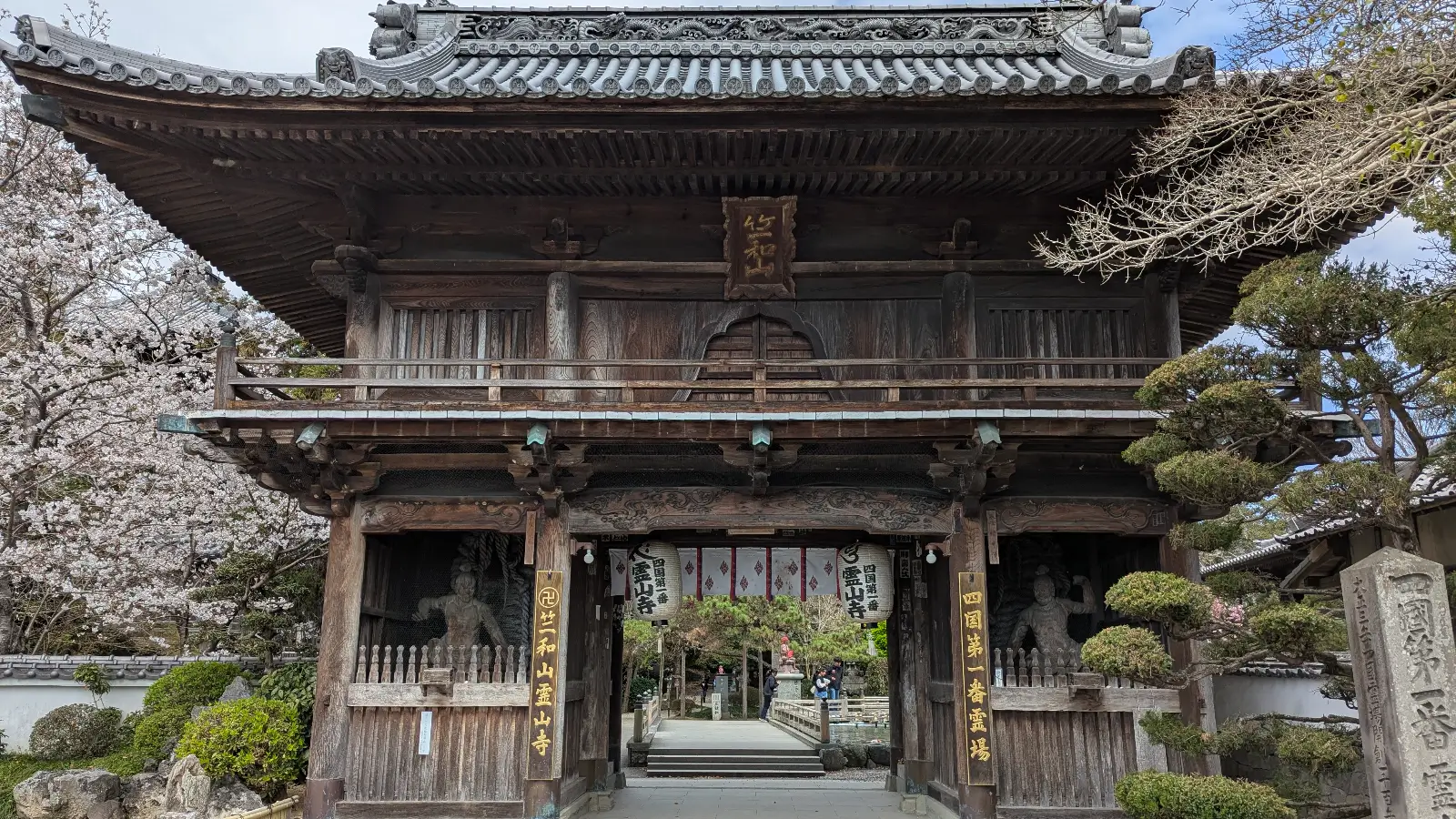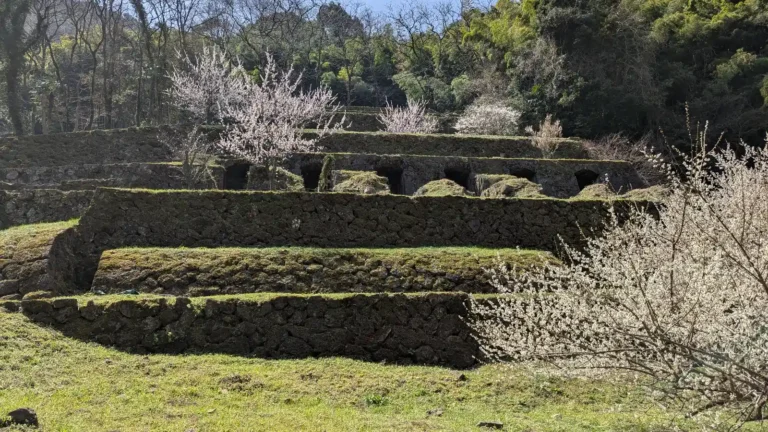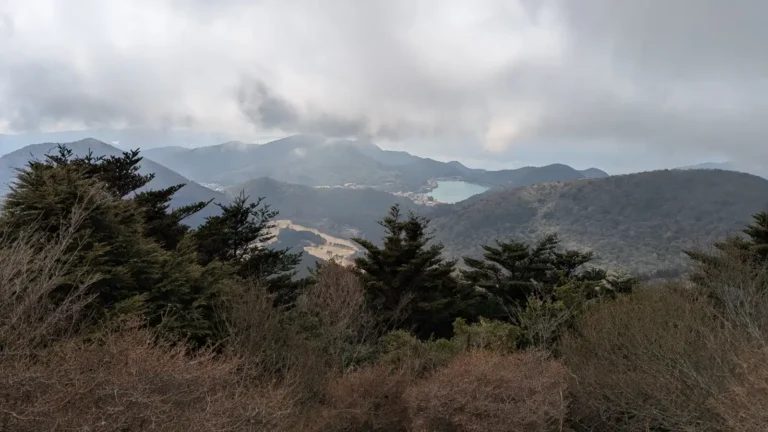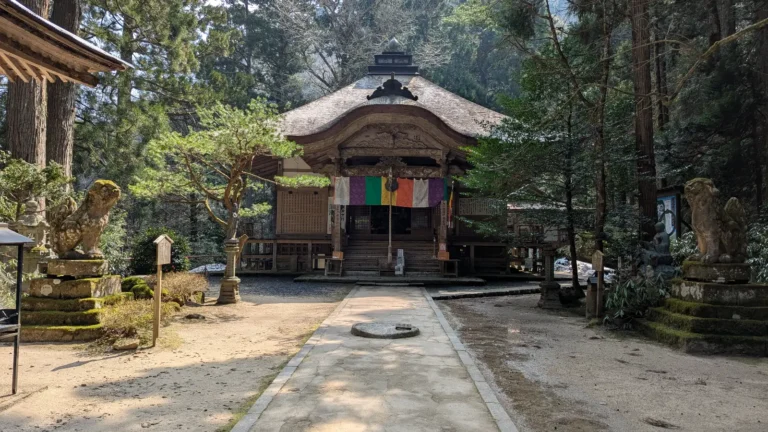Ryozen-ji: A JOTM Guide
You don’t hear the pilgrims before you see them. Just the rustle of robes, the faint click of a staff tapping stone. Then, white garments, straw hats, prayer beads. The stillness shifts. You’ve arrived at the first step of something old, something ongoing. Ryozen-ji (霊山寺) is not just a temple, it marks the start of the Shikoku Pilgrimage, a 1,200-kilometer journey that begins here, at Temple 1 of the Shikoku 88. For those visiting Ryozen-ji, every sound feels weighted with meaning, as if the path ahead is already listening.
Select links in this guide are affiliate links. They help sustain this space… allowing us to share more, with less dependence on advertising.
*Prices are subject to change.
Ryozen-ji at a Glance: Temple Overview & Quick Facts
- Region: Shikoku (Tokushima Prefecture)
- Nearest City: Tokushima
- Type of Site: Buddhist Temple (Temple #1 of the Shikoku 88 Pilgrimage)
- Best Season to Visit:
- Spring (March–May): Early blossoms drift through the air, and pilgrims begin their long journey
- Summer (June–August): Quiet and green, with less foot traffic despite the heat
- Autumn (September–November): Cool, amber-toned paths and a steady stream of walkers
- Winter (December–February): Stark stillness, morning frost on stone steps, and few distractions
Why It’s Special in One Sentence
Ryozen-ji is not just a temple, it’s the first heartbeat of a spiritual path, where every step forward carries centuries of intention.
Why Ryozen-ji Is Worth Discovering: Highlights of Ryozen-ji’s Pilgrimage Spirit
- Ryozen-ji marks the first temple of the Shikoku Henro, a sacred 1,200-kilometer route. Each morning, new pilgrims trace their first steps beneath its gate, some in silence, some in prayer.
- This is not a culmination, but a starting point. The air feels charged with potential. Everything here, incense smoke, temple bells, footprints in gravel, leans toward the future.
- Inside the hondo (main hall), legends of Kūkai, the founder of Shingon Buddhism, come alive. The temple preserves relics, statues, and a quiet reverence that suggests stories are still being written.
- Pilgrims bow, chant, and press stamp books to red ink. Even for non-pilgrims, there’s a rhythm to follow, a sense that you, too, are part of something larger than yourself.
- Arrive early to see light filter through cedar and cloud, illuminating prayer slips and the pale robes of those just beginning.
Must-See Wonders at Ryozen-ji: Main Hall, Bell Tower & Pilgrimage Path Highlights
Hondo (Main Hall)
- Step beneath the wooden beams blackened by time and touch prayer beads warm from others’ hands.
- The hall is quiet, intimate, and somehow both humble and immense.
Daishi Hall (Kōbō Daishi-dō)
- Dedicated to Kūkai, the revered monk behind the pilgrimage.
- Pilgrims often linger here longer, whispering odes or simply resting in the presence of his legacy.
Stamping Station (Nokyojo)
- Where pilgrims collect the first of 88 sacred stamps.
- A small, ritualized space where journeys are made visible.
Pilgrims’ Gate
- Watch for groups gathered here before dawn, some camera-shy, some chatting, most contemplative.
- A moment of stillness before movement.
The Small Garden Shrine
- Tucked behind the main structures is a miniature shrine with moss-softened stone, where non-pilgrims pause longer than expected.
- A breath before the road stretches ahead.
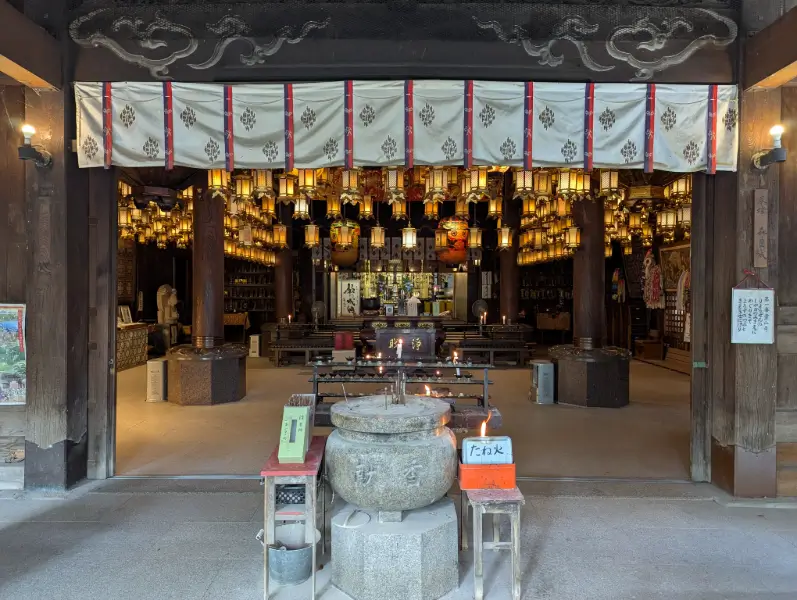
Local Secrets from JOTM: Hidden Tips for Visiting Ryozen-ji
- Arrive Before First Light: The temple opens early, and the hush before the first pilgrim enters is unforgettable.
- Walk Past the Gate, Then Pause: The experience of turning back to face the temple, knowing it’s the first of 88, lands heavier that way.
- Off-Season Is Deeper Season: Winter offers unbroken silence and space to feel the weight of beginning.
- Bring Your Own Sutras (or Silence): Even if you’re not chanting, walking with intention transforms the visit.
- Find the Jizō in the Corner: Behind the hondo is a small stone Jizō statue surrounded by offerings, often missed by those rushing onward.
Nearby Sacred Spaces: Shrines and Sites Near Ryozen-ji You Shouldn’t Miss
- Gokuraku-ji (Temple #2) – A gentle 10-minute walk from Ryozen-ji
- Ōasahiko Shrine – Shinto calm nestled in a forest grove (20 minutes by car)
- Myōō-in – A lesser-known temple tucked just 2 km south of Ryozen-ji, quiet and rarely visited by tourists.
- Onaruto Bridge & Whirlpools – Not sacred in tradition, but awe-inspiring in movement (30 minutes by car)
Getting to Ryozen-ji: How to Access the Temple by Foot, Bus, or Train
- By Train: Take the JR Naruto Line to Bando Station, then walk 10–15 minutes
- By Bus: Local buses run from Tokushima Station toward Naruto, but schedules are limited; check locally for the “Ryozenji-mae” stop
- By Foot: Ryozen-ji is often the first walking point from Tokushima for true pilgrims
- Hours: Typically open daily from dawn to dusk
- Cost: Free entry (donations welcome); pilgrim stamp ¥300
For travelers using the Japan Rail Pass, portions of this route may be covered, our guide offers practical insights on when it’s worth considering.
Resting Nearby: Hotels Near Ryozen-ji
- AoAwo Naruto Resort – A coastal retreat with ocean views and onsen baths, just 20 minutes from Ryozen-ji, ideal for a quiet reset before or after the journey begins.
- Grand XIV Naruto The Lodge – Nestled in pine-covered hills, this refined lodge offers a slower pace and easy access to both Naruto and the first pilgrimage temples.
- Hotel Anaga – Located on Awaji Island, this peaceful stay offers Seto Inland Sea views and a contemplative detour less than an hour from the temple region.
- Awaji Hamarikyu – A serene, ryokan-style hotel along the west coast of Awaji Island, where tradition and sea breezes mix.
- Hotel New Awaji – Blending Japanese elegance with ocean-side comfort, this onsen hotel offers an indulgent pause not far from the Naruto Strait.
- JR Hotel Clement Takamatsu – While farther afield, this polished base near the Seto Inland Sea is perfect for those linking pilgrimage with broader travel in Shikoku.
If you’re planning a broader journey through Japan, our foundational guides offer clarity for every step of the way. Explore Planning a Trip to Japan: A JOTM Guide, learn How to Get Around Japan, and find the Best Time to Visit Japan for a season that resonates with your rhythm.
FAQs and Travel Tips about Ryozen-ji: A Few Last Things Before You Go
Looking for practical advice before your visit? These Ryozen-ji travel tips and FAQs cover everything from access to atmosphere, no matter your path.
A: The best time to visit Ryozen-ji is in spring (March to May) or autumn (September to November). Early mornings during these seasons offer the quietest, most atmospheric experience, especially as the first pilgrims begin their journey.
A: 30–60 minutes allows time to explore, observe pilgrims, and absorb the atmosphere, longer if you walk on to Temple #2.
A: Ryozen-ji is in Naruto City, Tokushima Prefecture, about 15 minutes on foot from Bando Station on the JR Naruto Line.
A: Ryozen-ji is famous as the first temple on the 88-temple Shikoku Pilgrimage, making it the spiritual starting point for one of Japan’s most important sacred journeys.
A: No, you do not need to be a pilgrim to visit Ryozen-ji. The temple welcomes all visitors, including tourists, who wish to observe rituals or enjoy the peaceful atmosphere.
A: Yes, Ryozen-ji is very suitable for solo travelers. Many individuals begin their pilgrimage alone here, making it a welcoming and reflective place for solo visitors.
A: If you plan to walk the Shikoku Pilgrimage, wear comfortable walking shoes, breathable layers, and consider traditional white pilgrim attire (sold at Ryozen-ji) for a more authentic experience.
A: To start the Shikoku Pilgrimage at Ryozen-ji, visit the temple to purchase a pilgrim’s stamp book (nokyocho) and white attire, then receive your first temple stamp. From there, continue on foot or by transit to Temple 2, Gokuraku-ji.

